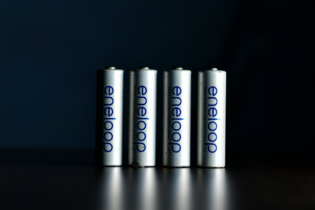Wentworth Hospital is a district-level hospital in Durban that sees almost 12 000 outpatients per month. The hospital pharmacy dispenses about 5 000 insulin pen sets monthly, each with a needle, to patients. There is no record of any sharps being returned to the hospital for disposal.
Case study of diabetic patients using insulin by D Govender and A Ross Insulin-dependent diabetic patients are not educated on safe sharps disposal methods, leading to unsafe disposal of needles. Appropriate education on the correct disposal of sharps should be an integral part of their diabetic counseling. Patients should be advised to either discard sharps into puncture-resistant containers placed into their household refuse, or return them in secure containers for disposal by the dispensing institutions. Patients should also be educated regarding health risks associated with used needles. We investigated current methods of sharps disposal by diabetic patients attending Wentworth Hospital’s (WWH) outpatient department (OPD), to compare these practices with the education received by patients about correct sharps disposal, and to make recommendations regarding the safe disposal of sharps by diabetic patients.|
SHARPS CONTAMINATION – THE FACTS |
| Diabetes is conservatively estimated to occur in 4 million South Africans, andall type 1 and up to 40% of type 2 diabetic patients, require insulin therapy. |
| Used sharps are a biomedical hazard as incorrect disposal could lead to needle-stick injuries (NSIs), posing the risk of contracting HIV, hepatitis B or C, and other blood-borne diseases. |
| An individual not protected by prior hepatitis vaccination who sustains an NSI from a needle used by an individual testing positive for hepatitis B surface antigen has a 6 –30% chance of infection by the virus. |
| Sharps disposal is a problem in South Africa because of accidental NSI to garbage removers or other persons handling domestic waste. |
| The 2009 Health Care Waste Summit recognised the problems with sharps disposal in South Africa. The safe disposal of needles and lancets used by insulin-dependent diabetic patients is not only a problem in South Africa; in 1989, 109 NSIs were formally reported by garbage collectors in the Atlanta (United States) metropolitan area, and other studies in Atlanta and European countries have highlighted the problem of incorrect sharps disposal practices by patients at home. |
Each month, 850 needles were generated by the 132 patients. Needles were re-used 2–20 times by patients; 117 (88%) patients disposed of used needles directly into their household rubbish bins, 8 (6%) flushed used needles down the toilet into the sewage system, and 4 (3%) used other methods such as burying the needles. Only 3 (2.2%) patients returned their needles in puncture-resistant containers to the hospital for disposal. No associations were found between race, gender, education levels and correct disposal of used sharps. Forty-six (35%) patients were aware of the potential health risks associated with injury caused by the incorrect disposal of used needles.
Of the participants, 91% (120/132) had received diabetic education and counseling regarding insulin use, storage and administration; 68% (89) rated the diabetic education as good, 22.7% rated it average, and 9.7% as poor. Despite the positive response to the education provided on use and storage of insulin, only 5 (3.8%) patients stated that they had received education and counseling regarding correct methods of sharps disposal. All three patients who were correctly disposing of their needles had been educated about how to do so. There was a highly significant association between education received by patients and correct needle disposal methods (p<0.001). Of the five who were educated in disposal, 60% correctly disposed of the needles whereas, of the 127 who were not educated in disposal, none correctly disposed of the needles. Discussion The race groups recruited for the study are representative of the patient population with diabetes seen at WWH. The data showed that over 97% of the study population discarded their sharps inappropriately. No recent studies were found on safe disposal of sharps by diabetic patients. However, our findings are consistent with studies in the early 1990s in Europe and the United States of America, highlighting the fact that needle disposal is a global problem in the developed and developing world. The large number of patients who dispose of their needles incorrectly is of concern. The National Environmental Management Act of 1998 states that the duty of care principle requires the generator of hazardous waste, under all circumstances, to carry the responsibility of the ultimate fate of the generated waste. Patients, healthcare workers or healthcare facilities could be liable for costs associated with treating garbage collectors who can prove that they were infected from contaminated needles. This serious issue requires urgent attention from health professionals, who have a responsibility to provide information to patients about safe disposal of needles. It is disappointing to note that since 2009, when disposal of needles and other hazardous material was identified as a serious issue at the Health Care Summit, more emphasis has not been placed on safe needle disposal. Despite much work on needle-free products for the administration of insulin, progress has been slow and inconsistent, and no significant needle-free alternative method of insulin administration is available. As needles will continue to be part of diabetic care by all patients requiring insulin for some time to come in South Africa and other countries, their safe disposal must therefore form an integral part of diabetic education. Although this study’s numbers are small and the results must be treated with caution, they suggest that appropriate education and knowledge on sharps disposal is the most important determining factor in correct disposal methods. Published with permission from the South African Medical Journal: Vol 102, No. 3 (2012)






